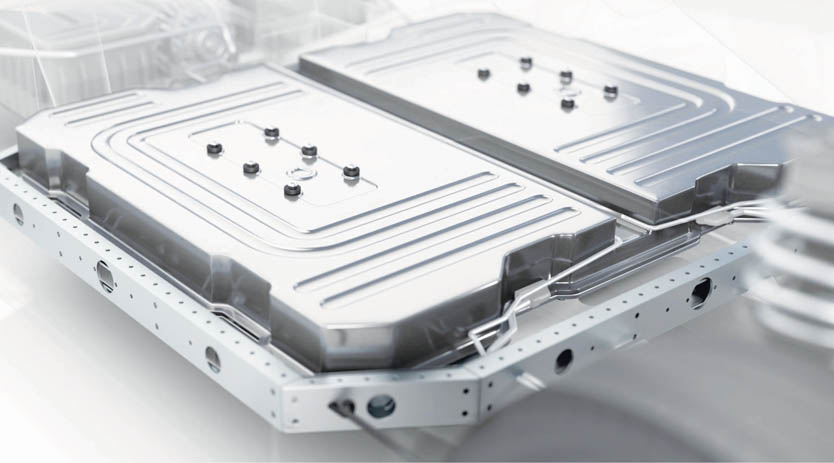Does India's Semiconductor Policy Need an Extension? A Frost & Sullivan Market Insight
April 14, 2010 11:34 am
Does India’s Semiconductor Policy Need an Extension?
A Frost & Sullivan Market Insight
“With mature semiconductor design capabilities and semiconductor manufacturing infrastructure, India could become a key player in the global electronics industry.”
A recent task force report, recognized by the Department of Information Technology (DIT), Government of India, proclaims that the domestic electronics demand is expected to surge to $400 billion by 2020 from its current level of $45 billion. Semiconductors’ being the lifeline of all electronic products, its demand is expected to mirror the growth in the electronics industry. This raises the question of how the demand for semiconductors in the future is going to be met. Importing indeed is the easy way out, but for attaining self reliance in the electronics and semiconductor industries and ensuring that these industries are critical contributors to the country’s GDP, it is imperative for semiconductor fabrication to commence and proliferate at the earliest.
In the last couple of decades, semiconductor chip design has grown rapidly in India, thus establishing the country as a global semiconductor design hub. Intel Corporation, Texas Instruments Incorporated, Advanced Micro Devices, Inc, STMicroelectronics, National Semiconductor Corporation, Analog Devices, Inc., Infineon Technologies, Microchip Technology Inc, Renesas Technology Corp. to mention a few, are some of the top 25 companies that have set up design houses or representative offices in India.
Despite the success in design services, manufacturing has remained a distant. Organizations such as the India Semiconductor Association (ISA) have worked with the government to initiate favorable policies to encourage investments in semiconductor manufacturing. Thus, was born the ‘Semiconductor Policy’ of Government of India in 2007, aimed at improving the country’s semiconductor ecosystem in a structured and planned manner. After being in operation for the past 3 years, this policy is due to expire on 31st March, 2010. During the past couple of years, there have been proposals submitted under the policy; however, the key objective of the policy is yet to be completely realized. The global economic downturn of 200809 resulted in declining demand from electronics OEMs, forcing semiconductor companies to curtail production and postpone their investment decisions. This economic scenario adversely impacted the success of the semiconductor policy.
Companies engaged in Solar PhotoVoltaic (PV) manufacturing have to a certain extent taken advantage of the policy but no proposals were received for developing a wafer fabrication unit. This paper evaluates the success of semiconductor policy of India and provides an independent assessment of the need for its extension beyond its current term.
Indian Semiconductor Industry A Sleeping Giant
The electronics industry is one of the largest and fastest growing industries globally, as the use of electronics in various industries is continuously rising. Emulating this global trend, the electronics industry in India is also on an upswing. Consumption of electronic products in the country has been steadily growing, thanks to a growing economy and an increasing middle class population. Even during the economic downturn, the consumption of electronic goods in India witnessed moderate growth. This growth was fueled by the increasing demand for consumer white goods and mobile devices. With the global economy showing strong signs of recovery, this growth is expected to continue in the long term. Though not on par with consumption, local production of electronics has also seen a boost, influenced by IT/OA, wireless handsets, and communication equipment production in the last decade. These segments collectively hold a share of 80% share of the total electronics market revenues in the country.
The Semiconductor Industry in India is in an emerging stage. According to the ISAFrost & Sullivan study, the total semiconductor market in India was estimated to grow from $5.90 billion in 2008 to $7.59 billion in 2010, at a CAGR of 13.4%. Globally, the semiconductor market is expected to reach $273 billion in 2010 from $261.90 billion in 2008. It is clearly evident that the Indian semiconductor market is growing at 6 times the global market. While the growth rate of electronic products in advanced geographies is stagnating, the demand in India is witnessing an exponential growth. In contrast to the Total Market (TM) revenues estimated at $5.9 billion for 2008, the corresponding Total Available Market (TAM) revenue was $2.53 billion in 2008 and this is expected to reach $3.24 billion in 2010. TAM denotes the revenues from locally manufactured and assembled products. The electronics industry with an anticipated manufacturing index (TAM/TM) of only 39% by 2010, is likely to result in an opportunity loss of $4.35 billion for semiconductor sales in India. Chart 1.1 shows the TM and TAM forecasts for the total Indian semiconductor market from 2007 to 2010.
It is clearly evident, that by establishing India as a manufacturing hub for electronics, India would be able to alleviate its reliance on other Asian countries for electronics products and rather become an export hub itself. With mature semiconductor design capabilities and semiconductor manufacturing infrastructure, India could become a key player in the global electronics industry.
End User Segments – Drivers for Semiconductor Demand
Over 100 million mobile handsets are sold in the country each year. Wireless equipment, computer systems, and set top boxes have been the key products, which are on a high growth trajectory. Medical, automotive, power, and industrial electronics segments have significant number of small and medium scale (SME) players who present a potential opportunity for semiconductor manufacturers. Local manufacturers of portable electronic devices, which include audio, video, gaming application among others are another set of industry niche that is likely to spur the demand for semiconductors in the country.
Semiconductor Design Strengths
India has been recognized for its strengths in semiconductor chip design and embedded systems. Many of the semiconductor multinationals with design houses in India carry out end-to-end design activities in these captive units, showcasing the potential to globalize their designs developed in these centers. The driving force for the development of chip design industry in India is the access to skilled engineering professionals, cost arbitrage and well established Intellectual Property (IP) laws.
Need for the Semiconductor Policy
The task force set up as a joint initiative between the Department of Information Technology (DIT) and the ICTE industry for creating a compelling vision for the ICTE industry, has in its report highlighted that the domestic consumption for electronics is likely to reach $400 billion by 2020 and that to meet this demand local electronics production needs to be scaled up to $320 billion. This massive growth in local electronics production is expected to amplify the demand for semiconductors thus triggering the need for local chip fabrication.
The cost to setup a fab is a key factor in determining the financial feasibility of the project. In 2005, when SemIndia Inc proposed to setup a fab, the estimated investment was $3 billion, which doubled to nearly $7 billion by 2008. The drivers for the cost of fabs are increased wafer diameters, increased complexity of process due to shrinking line-widths, and output volume capacity on a monthly basis. The capital expenditure for setting up a chip fabrication plant has increased while the price per chip has declined over the years. Further, despite the high level of automation in fabrication units, chip manufacturing does require its share of skilled labour. Yet another critical requirement for setting up a fab is the presence of world class infrastructure facilities.
Currently, India has the intellectual potential in terms of skilled workforce. The semiconductor design industry in the country is mature with a strong IP policy. Though the country’s infrastructure needs a lot of improvement, periodic initiatives have been taken to raise the level of infrastructure in the country. Even in the recent budget announcement for fiscal 201011, the Government has provided INR 1,735.52 billion for accelerating the development of high quality infrastructure such as roads, railways and ports. Further the Government has more than doubled its plan allocation to the power sector to INR 51.3 billion compared to the previous fiscal year.
From all the above factors, it is evident that the presence of an exclusive policy that alleviates to a certain extent, the financial burden involved in setting up a fab apart from offering other incentives, is the right antidote for promoting chip production in the country.
Cookie Consent
We use cookies to personalize your experience. By continuing to visit this website you agree to our Terms & Conditions, Privacy Policy and Cookie Policy.
















